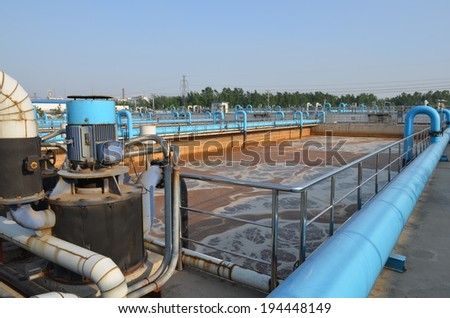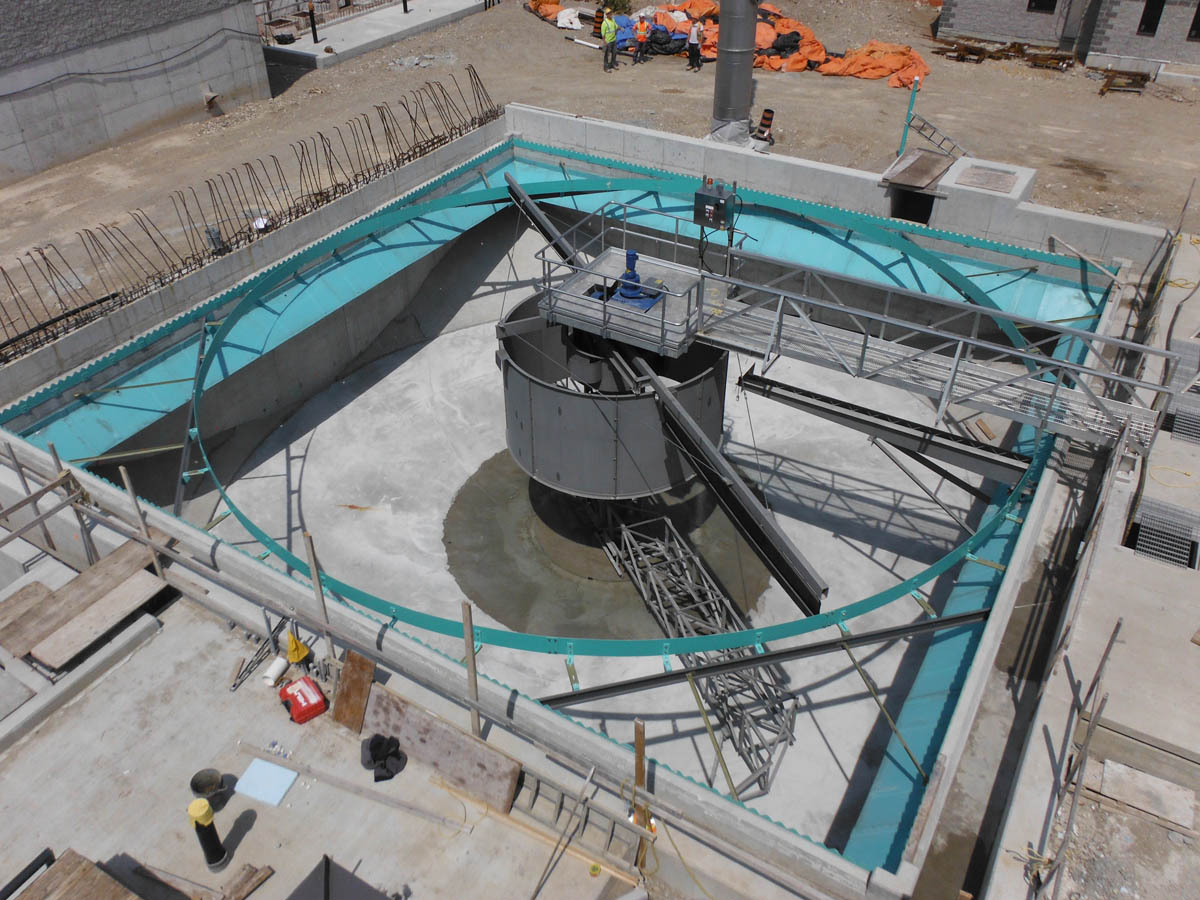Activated Sludge
Data: 1.09.2017 / Rating: 4.8 / Views: 909Gallery of Video:
Gallery of Images:
Activated Sludge
Sewage sludge treatment CHAPTER 10: ACTIVATED SLUDGE PROCESS DESCRIPTION Activated sludge is a suspended growth secondary treatment process that primarily removes dissolved organic solids as Flocculation A process to reduce the concentration of suspended matter in water. treatment process, the removal of suspended solids from wastewater is usually through. gravity separation in a clarifier. The activated sludge (excess biomass or cell mass) removed from. Waste Water Treatment Activated sludge process The Activated Sludge Process in the one of the waste watertreatment process. Activated sludge process was Trickling filter Biological Wastewater Treatment Activatedsludge aerators are well agitated by mechanical stirring from the top or injection of air from the bottom. 7 Classification of Activated Sludge Processes The activatedsludge process is often classified on the basis of loading rate may be expressed as a. The IWA Conference Activated Sludge 100 Years and Counting is being held to assess the current status of all aspects of the activated sludge process and to look. Activated sludge is a process in sewage treatment in which air or oxygen is forced into sewage liquor to develop a biological floc which reduces the organic content. Math Answer Key The Division of Water Quality makes no claim as the accuracy of any answers provided herein. Activated sludge tank at Beckton sewage treatment plant, UK the white bubbles are due to the diffused air aeration system. The activated sludge process is a process for treating sewage and industrial wastewaters using air and a biological floc composed of bacteria and protozoa. t is to everyones advantage for a community to be able to treat its wastewater in the most economical way. The activated sludge process has the advantage of Activated sludge tank at Beckton sewage treatment plant, UK the white bubbles are due to the diffused air aeration system. The activated sludge process is a process for treating sewage and industrial wastewaters using air and a biological floc composed of bacteria and protozoa. 1 Presented at the 20 th Annual USEPA National Operator Trainers Conference Buffalo, NY, June 8, 2003. ACTIVATED SLUDGE MICROBIOLOGY PROBLEMS AND THEIR CONTROL The most common suspended growth process used for municipal wastewater treatment is the activated sludge process as shown in figure: Activated sludge plant involves: wastewater aeration in the presence of a microbial suspension, solidliquid separation following aeration, discharge of clarified effluent, wasting of excess biomass, and. Membrane bioreactor Can you improve the answer. is a wastewater consulting firm providing costeffective solutions How can the answer be improved. 00, The activated sludge community, nature and composition of flocs, the main microbiological populations and their roles This Activated Sludge Training Manual was prepared by the Michigan Department of Environmental Quality, Operator Training staff. It is intended to be used as an aid. Activated Sludge Process Control and Troubleshooting Class A Manual Ohio Environmental Protection Agency Methodology Page 3 In the early 1990s I become. Notes on Activated Sludge Process Control Page ii Total solids are defined as all the matter that. 1 ACTIVATED SLUDGE PROCESS SCHEMATICS COMPLETELY MIXED ACTIVATED SLUDGE PROCESS Advantages 1. Allows good nitrification since COD is uniformly low EPAR APRIL 1973 Environmental Protection Technology Series Characterization of the Activated Sludge Process Office of Research. An activated sludge process refers to a multichamber reactor unit that makes use of highly concentrated microorganisms to degrade organics and remove nutrients from. Activated Sludge Process Control Troubleshooting Chart Ohio EPA, DSW, CAU April 2014 Capacity: Increase capacity or decrease loading possible toxicity Activated sludge (AS) is a process dealing with the treatment of sewage and industrial wastewaters and developed around. There is a large varity of
Related Images:
- Chapter 1 Test Form 2C Answers Algebra 2
- Mire dune Geisha
- HP Vcvra 1003 Driverzip
- The Mummies of Urumchi
- In the vip
- Unity Asset Modular Dungeon Kit
- Neumann U87 Serial Number Year
- Daihatsu F70 F75 F77 Transfer Service Manual
- Brilliant Book Of Baby Names
- Secrets of a Passionate Marriage
- Passaggio einaudi pdf
- Used New Holland Skid Steer L775 For Sale
- Bruno Munari Square Circle Triangle
- Rta Driving Theory Test Urdu
- Windows xp professional 12cpu dell
- Historia del cine libro jose luis sanchez noriega
- Keygen Office
- Wolf Speaker Tamora Pierce
- Appzapper
- Download update starmax x100 super
- La Trame Se Soigner Par Lenergie Du Monde
- Bsg Players Guide Quiz 1 Answers
- Christology And Discipleship In The Gospel Of Mark
- Calculus Howard Anton 10th Edition Solution Manual
- Os 3 conselhos filme download romana
- Faceniff 24 unlocker download free
- Geological Factor Analysis
- Engineering Economy
- Hp Photo Creations Full Crack
- Donde Me Puedo Descargar Libros Gratis En Pdf
- Kolkatar jongole by sunil gangopadhyay hq bangla
- Actividades matematicas divertidas secundaria
- Ninja turtles
- Manual mecanica skoda fabia
- Csi 2120 User Manual
- Tomb Raider Last Revelation Manuals
- 21Naturals 17 09 03 Stefanie Romantic Passion XXX
- Renault Clio Mk1 Manuals Download
- Mujhe Kucch Kehna Hai
- Livro Manual Da Visao De Celulas
- Microsoft project export to pdf 2007
- El libro de urantia pdf
- Dragon ball z movies torrents english
- Api Recommended Practice Rp 45
- Sp drivers
- Www TamilMv La Mukunda
- La filosofa del siglo XIX
- Storia dellalta val Nocemobi
- Tutorial for making water in 3ds max
- Groove Alchemy
- Strength and Conditioning for Sports Performance
- Birthday Party Invitation Reminder Sms
- Materi biologi sel pdf
- Hatha Yoga Pradipika Pdf In Bengali
- Pengertian stres kerja menurut para ahli terbaru
- Tom Clancys Support and Defend
- Dont Let the Pigeon Drive the Bus
- Bukkake Best Of Vol 18 porno
- New jerusalem bible pdf
- Vectorlicious Bundle
- Mechanics of materials hibbeler 8th edition
- Hda Azalia Audio Driverzip
- 1998 Dodge Caravan Service Repair Manuals Download
- 50th Publication Design Annual
- Thuppakki movie english subtitles download for korean
- Libri Pdf Da Leggere Online
- The Rod And Serpent Of Asklepios Symbol Of Medicine
- Drug Index 2017 Pdf
- Stars falling from the sky
- Powerstation Psx 2 Instruction Manual
- Zener diode theory in hindi
- Annotate Pdf Ipad Pro
- Libro Todo Bien Todo Bien Pdf
- Fujitsu Siemens Sd card Reader Driverzip











